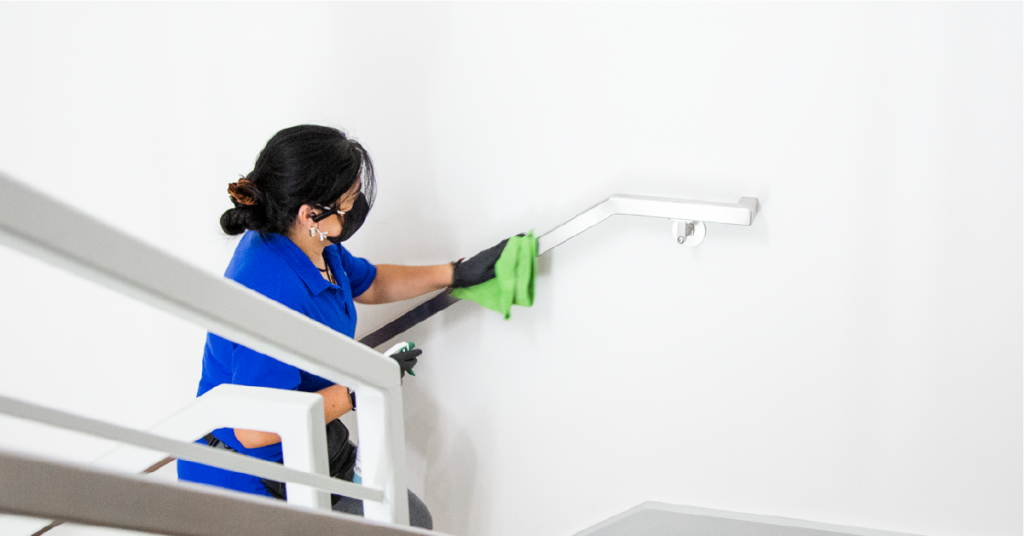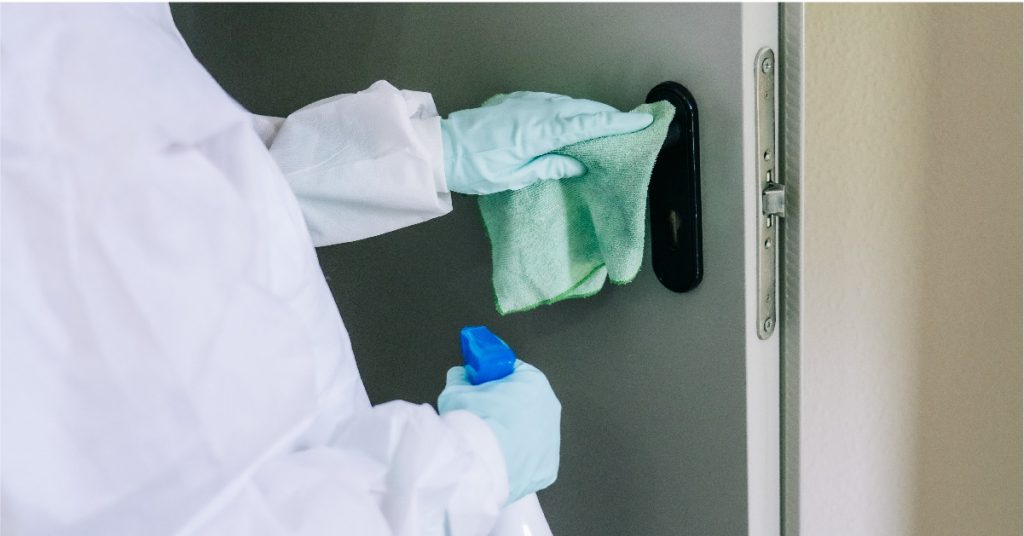Facility Day Cleaning: The Essential Checklist

Having a visible and active facility day-cleaning program goes a long way. Not only does it help reduce dangerous germs, the presence of a day cleaner reassures employees and visitors that you’ve upped your game – doing everything you can to keep them healthy. Day cleaners, often referred to as day porters, serve a variety […]
4 ways to ID a great post-construction cleanup service

Curious what to look for in a post-construction cleanup service to help you ID one that’s not only effective but also efficient? It’s a common question. And it’s one that often gets overlooked during the building process. Everyone is focused on completing the job – not cleaning up afterward. But it’s a critical step to ensure your space is ready for employees and […]
Good. Better. Best. How often to disinfect hard surfaces and high-touch areas in manufacturing facilities.

If a million-dollar cleaning question exists for manufacturers in the age of COVID-19, it’s this: How often should I disinfect the hard surfaces and high-touch areas in my facility? Here’s the truth: A perfect answer doesn’t exist. That’s because the only way to guarantee a facility is always COVID-free is to disinfect it and then […]
Six Ways to Incorporate Green-cleaning Practices During a Pandemic

It’s not always easy being green, especially when we’re in the midst of a pandemic. But when it comes to your facility’s cleaning program, you can still take small, strategic steps to incorporate green-cleaning practices. Since 2011, we’ve held ISSA’s “Cleaning Industry Management Standard – Green Building” certification (excuse the humble brag). We only mention it because we have the training and the […]